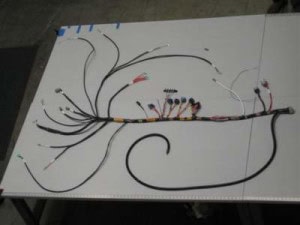
Cable assemblies are marked with company logos, brand names, serial numbers, date codes, or bar codes for several reasons. The labeling enables easy identification and fast product traceability. The aforementioned information can be created anywhere in individual cables of the assembly, for example, at the beginning, at the end or middle as per customers’ requirements.
Since cable assemblies are meant to function under severe environmental conditions and harsh industrial environments, the marking must be abrasion resistant and durable. They must withstand elevated temperatures, moisture, harsh chemicals, and solvents, among others. This blog lists a few of the widely used cable assembly marking methods that are capable of meeting the above said requirements.
Cable Assembly Marking Methods
To create accurate, permanent, and clean marks on cable assemblies, following methods have been used.
- Hot Stamping – This is the oldest, but still used technique to label individual wires in the cable assembly. The advantages of the method include, low cost, and the ability to create permanent and legible marks in less cycle time.
- Thermal Transfer – This method is largely chosen for its ability to create high-contrast marks directly on to both stationary as well as rolling wires. In addition, the method allows labelling cable assemblies over a greater circumferences compared to other methods.
- Ink-jet – This method is widely used, reliable, durable, easier and faster. Benefits are uncountable when it comes to ink jet marking. The ink jet is compatible to most of the wire insulation, and guarantees permanent and abrasion resistant marking.
- Laser – Finally, laser printing, the talk of the town. There are several advantages, making this method superior to other labelling methods. It is a non-contact marking method that helps in creating desired marks without damaging the work piece. The method is extremely fast and can create permanent, crisp, highly detailed mark on cable assemblies with any type of insulation.
Each of the aforementioned cable assembly marking has its own pros and cons. It is imperative to select the right labelling method for achieving desired results without altering the structure and characteristics of cable assembly. Consider the type of insulation material, compatibility of the labelling method with the raw materials used, type of information to be marked, processing speed and cost per mark when choosing the method. However, whichever method you choose, ensure that it delivers legible, permanent, abrasion resistant marks on the assembly.

